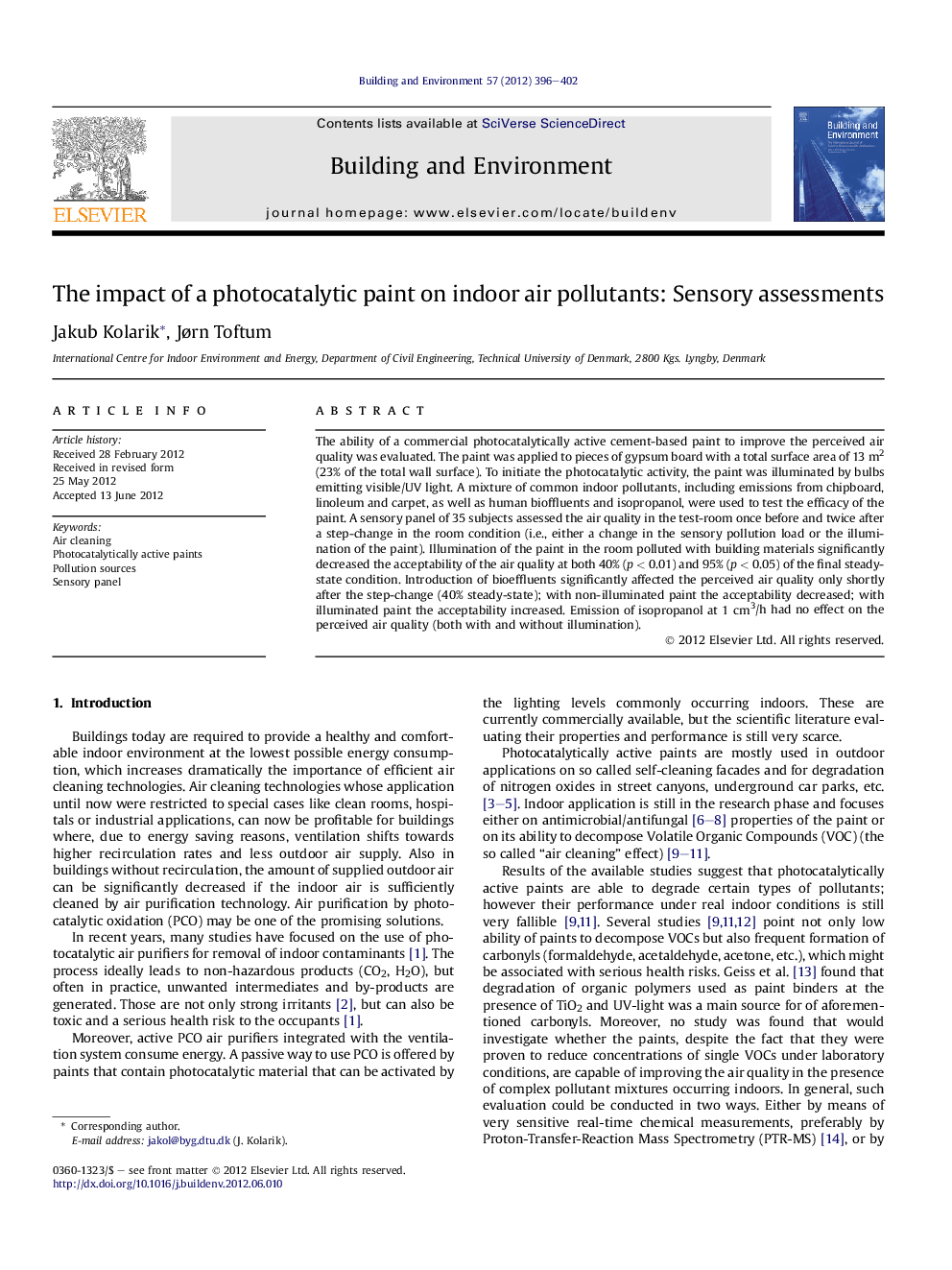| Article ID | Journal | Published Year | Pages | File Type |
|---|---|---|---|---|
| 248535 | Building and Environment | 2012 | 7 Pages |
The ability of a commercial photocatalytically active cement-based paint to improve the perceived air quality was evaluated. The paint was applied to pieces of gypsum board with a total surface area of 13 m2 (23% of the total wall surface). To initiate the photocatalytic activity, the paint was illuminated by bulbs emitting visible/UV light. A mixture of common indoor pollutants, including emissions from chipboard, linoleum and carpet, as well as human bioffluents and isopropanol, were used to test the efficacy of the paint. A sensory panel of 35 subjects assessed the air quality in the test-room once before and twice after a step-change in the room condition (i.e., either a change in the sensory pollution load or the illumination of the paint). Illumination of the paint in the room polluted with building materials significantly decreased the acceptability of the air quality at both 40% (p < 0.01) and 95% (p < 0.05) of the final steady-state condition. Introduction of bioeffluents significantly affected the perceived air quality only shortly after the step-change (40% steady-state); with non-illuminated paint the acceptability decreased; with illuminated paint the acceptability increased. Emission of isopropanol at 1 cm3/h had no effect on the perceived air quality (both with and without illumination).
► We studied the ability of photocatalytic paint to improve the perceived air quality. ► Test room space was polluted with building materials and human bioeffluents. ► Illumination of the paint significantly decreased acceptability of the air quality. ► Detailed chemical measurements are necessary to fully evaluate paint's performance.
